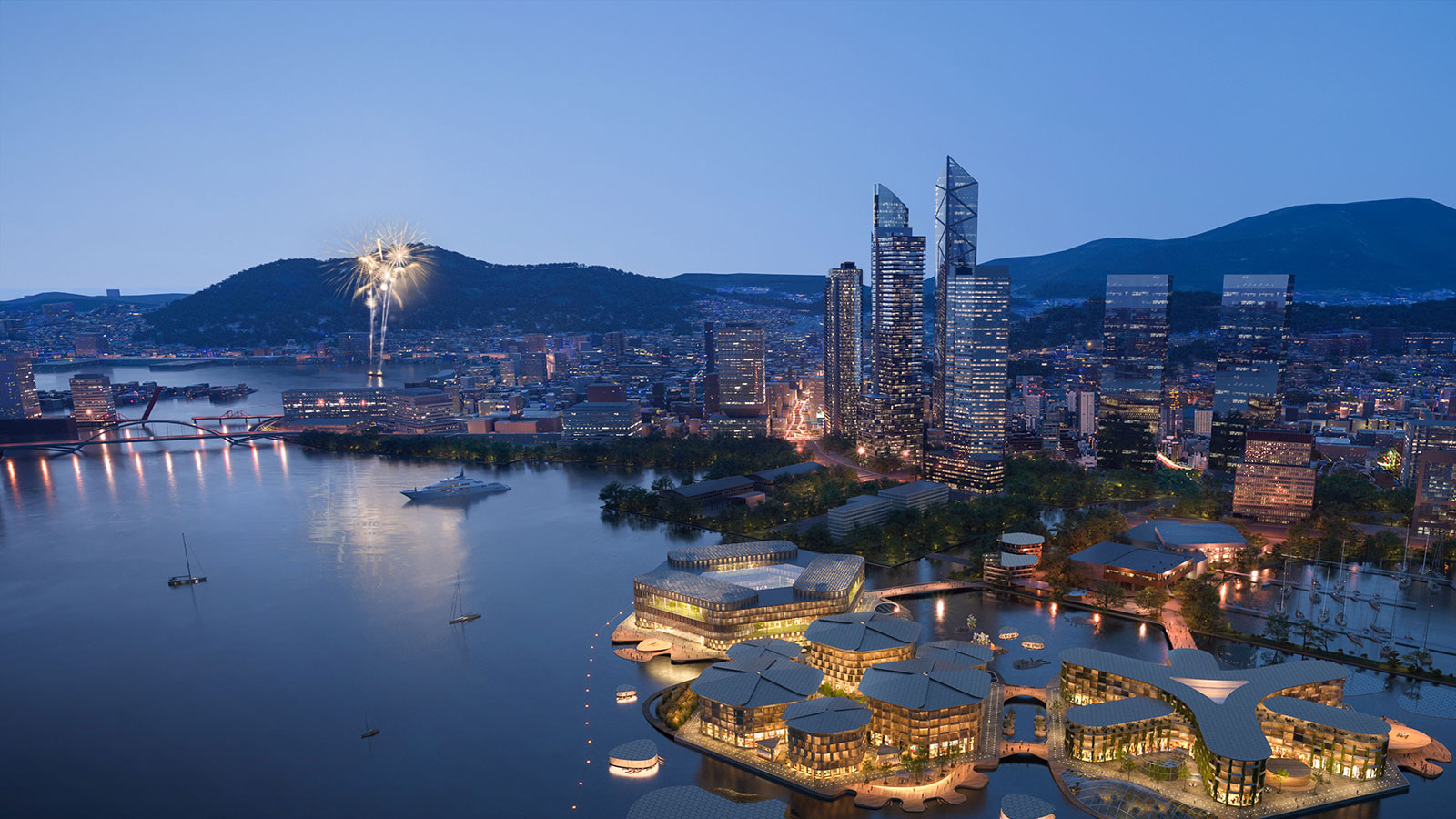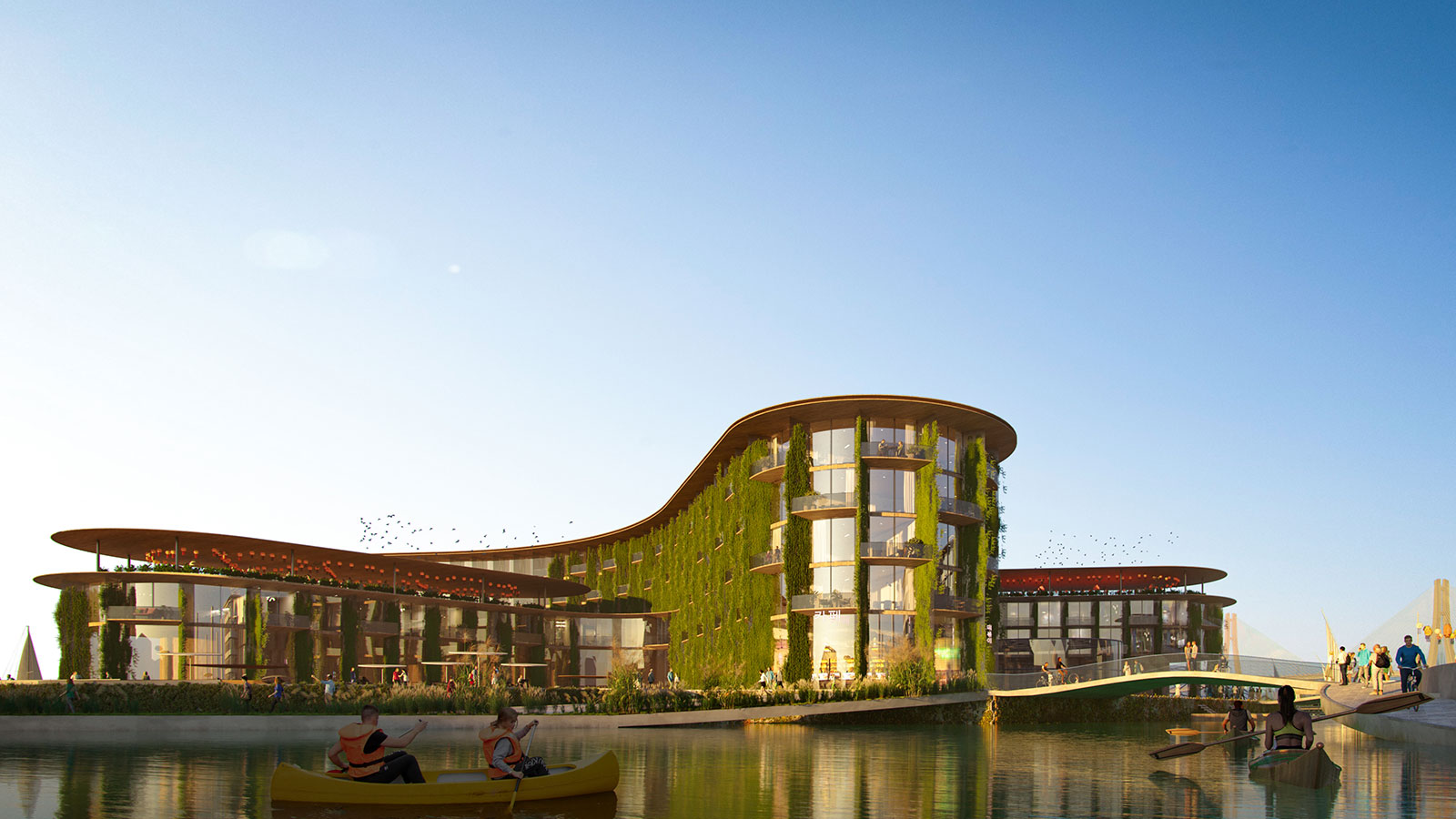OCEANIX, a blue tech company based in New York, led a team of the world’s best designers, engineers, and sustainability experts in designing the flood-proof prototype. BIG-Bjarke Ingels Group and SAMOO (Samsung) were the lead architects of OCEANIX Busan, unveiled at the Second UN Roundtable on Sustainable Floating Cities; a follow up to the inaugural Roundtable in April 2019, where it was agreed to build a prototype with a host city. Busan signed on last year.
The challenge is massive: two out of every five people in the world live within 100 kilometers of the coast, and 90 percent of mega cities worldwide are vulnerable to rising sea levels. Flooding is destroying billions of dollars worth of infrastructure and forcing millions of climate refugees to leave their homes. With nowhere to expand, rapid urban population growth is pushing people closer to the water, driving housing costs to prohibitive levels, and squeezing the poorest families out.

“OCEANIX’s modular maritime neighborhood will be a prototype for sustainable and resilient cities. As our first manifestation of this new form of waterborne urbanism, OCEANIX Busan will expand the city’s unique character and culture from dryland into the water around it. We believe OCEANIX’s floating platforms can be developed at scale to serve as the foundations for future resilient communities in the most vulnerable coastal locations on the frontlines of climate change,” says Bjarke Ingels, Founder and Creative Director, BIG-Bjarke Ingels Group.
OCEANIX Busan is the world’s first prototype of a sustainable floating community. The interconnected platforms total 15.5 acres to accommodate a community of 12,000 people. Each neighborhood is designed to serve a specific purpose – living, research, and lodging. There are between 30,000 to 40,000 square meters of mixed-use programs per platform. The floating platforms connect to land with link-span bridges, framing the sheltered blue lagoon of floating recreation, art, and performance outposts. The low-rise buildings on each platform, defined by their soft lines, feature terraces for indoor-outdoor living activating the network of vibrant public spaces. OCEANIX Busan will organically transform and adapt over time based on the needs of Busan. Starting from a community of 12,000 residents and visitors, it has the potential to expand to accommodate more than 100 000 people. The floating platforms are accompanied by dozens of productive outposts and greenhouses. OCEANIX Busan has six integrated systems: zero waste and circular systems, closed loop water systems, food, net zero energy, innovative mobility, and coastal habitat regeneration. These interconnected systems will generate 100% of the required operational energy on site through floating and rooftop photovoltaic panels. Similarly, each neighborhood will treat and replenish its own water, reduce and recycle resources, and provide innovative urban agriculture.







